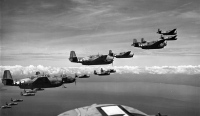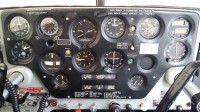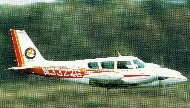Oil blow-by
13 posts
• Page 1 of 1
Oil blow-by
When I got my 250 the engine had about 1800 hours on it and I was putting in a quart of oil every 2 to 3 hours. Due to the grime on the undercarriage and the oil spots every place that I parked for a while, it appeared as though it was more blow-by than burn. The engine has been rebuilt 24 months ago and has about 200 hours on it now and I am still adding a quart about every 2 to 3 hours. I also still have a lot of drips everywhere that I park. In talking with the guys at Webco they suggested that there may be some siphoning going on due to the breather tube hanging down to low. Looking for some other experiences with issues like this. Thanks.
- Mark Deepe
- Posts: 19
- Joined: Mon Oct 08, 2012 2:54 pm
Re: Oil blow-by
Well one thing you could do is put an empty soup can below the crankcase vent to see if that is any significant source of the drops. I actually use this process to reduce the belly grime just like it says in the Tips manual.
Pat D
Pat D
-

Pat Donovan - ICS Treasurer

- Posts: 93
- Joined: Sun Jul 11, 2004 3:32 pm
- Location: Troy, MO
Re: Oil blow-by
How much oil are you keeping the engine at? Some of the engines will just blow out anything over 8 quarts. Two years ago I stopped adding oil until it showed less than seven quarts on a cold engine that had been sitting for a few days. Six if it had been flown recently. Oil "consumption" dropped a bunch.
When I bought my aircraft I had a lot of trouble with oil showing up all over the place. Consumption wasn't too bad (quart every 15 or so) but drops everywhere. Fixed the following:
- blown front oil seal
- loose rod tube seals
- four loose crank-case bolts near the front
The leaks have largely stopped. I still get it drooling down over the carburetor a bit, but it *is* an aircraft engine. A certain amount is inevitable.
When I bought my aircraft I had a lot of trouble with oil showing up all over the place. Consumption wasn't too bad (quart every 15 or so) but drops everywhere. Fixed the following:
- blown front oil seal
- loose rod tube seals
- four loose crank-case bolts near the front
The leaks have largely stopped. I still get it drooling down over the carburetor a bit, but it *is* an aircraft engine. A certain amount is inevitable.
-

William Hughes - Posts: 97
- Joined: Mon Apr 21, 2014 9:23 pm
- Location: Saskatoon, SK
Re: Oil blow-by
Thanks for the reply William. I keep it at 8 quarts on the dipstick. I have seen posts about this before and I have actually let it go down below 7 (closer to 6) before to see if that was the case but I still go through it at about the same rate. Same rate, old engine, new engine, above 8, below 8.
Pat, thanks for the hint about the tips. I did do some initial searching but did not see the tip you are referencing. I will look again. I do keep a can under the breather tube in the hangar. As an example, when I come back from a flight and park in front of my hangar, wait for the hangar door to open and go to push my plane back in, I will see 4 to 5 drops of oil below the breather tube.
Pat, thanks for the hint about the tips. I did do some initial searching but did not see the tip you are referencing. I will look again. I do keep a can under the breather tube in the hangar. As an example, when I come back from a flight and park in front of my hangar, wait for the hangar door to open and go to push my plane back in, I will see 4 to 5 drops of oil below the breather tube.
- Mark Deepe
- Posts: 19
- Joined: Mon Oct 08, 2012 2:54 pm
Re: Oil blow-by
Pat,
Found the tip you were referencing. Thank you. As a point of clarification, a dirty underbelly isn't much of a concern for me as is the amount of oil coming from the breather tube. Thanks again for your post.
Found the tip you were referencing. Thank you. As a point of clarification, a dirty underbelly isn't much of a concern for me as is the amount of oil coming from the breather tube. Thanks again for your post.
- Mark Deepe
- Posts: 19
- Joined: Mon Oct 08, 2012 2:54 pm
Re: Oil blow-by
Mark,
IIRC The lyc manual says the normal oil usage is 1 qt per 3 hrs. My engine (250) had ~200 SMOH hrs on it when I got it and now has 900. It has always used right at 1 qt per 3-3.5 hrs. I hate it! I have done everything I know to do (without actually tearing in to things) and can't seem to decrease the oil usage. I'm a little different than you in that I don't have any significant leaks (knock on wood). There are a couple places on the engine that get a little oily, but never any drops on the floor. I have some oil on the belly, only on the breather tube side, but not a qt's worth. I've given up and am just buying more oil. As long as the rate of usage doesn't change, I'm not going to worry about it.
I think folks that say they don't have to add oil between oil changes are just bragging.
vr
Jim
IIRC The lyc manual says the normal oil usage is 1 qt per 3 hrs. My engine (250) had ~200 SMOH hrs on it when I got it and now has 900. It has always used right at 1 qt per 3-3.5 hrs. I hate it! I have done everything I know to do (without actually tearing in to things) and can't seem to decrease the oil usage. I'm a little different than you in that I don't have any significant leaks (knock on wood). There are a couple places on the engine that get a little oily, but never any drops on the floor. I have some oil on the belly, only on the breather tube side, but not a qt's worth. I've given up and am just buying more oil. As long as the rate of usage doesn't change, I'm not going to worry about it.
I think folks that say they don't have to add oil between oil changes are just bragging.
vr
Jim
-

Jim Worley - ICS member

- Posts: 70
- Joined: Sun Jun 14, 2009 6:10 am
Re: Oil blow-by
Thanks Jim. Misery does love company.
- Mark Deepe
- Posts: 19
- Joined: Mon Oct 08, 2012 2:54 pm
Re: Oil blow-by
I would like to suggest keeping the oil no more than 6qts. Not to worry, as Lycoming lists 2 qts as a minium. I have found on 5 different Lycomings, that they will rapidly get rid of anything over about 6qts. I, as well as another PA-30 owner keep it at around 5-6 qts. No bragging- I have some drips, but I normally get about 10 hrs to go from 6 to 5 qts. He gets closer to 14 hrs.
The only reason for our sumps being at 8 qts is the certification requirements for oil tank size. (oil distributors love a full sump!) I used to fly aerobatics in a Pitts with 5-6 qts. I was full throttle most of the time in all attitudes, and never worried about overspeeds. That engine had no problems with temps, oil circulation or anything else. If you were to survey, I think that you will find most -320's & -360's operates 5-6 qts. Call a few engine shops for a piece of mind if you'd like.
larry
The only reason for our sumps being at 8 qts is the certification requirements for oil tank size. (oil distributors love a full sump!) I used to fly aerobatics in a Pitts with 5-6 qts. I was full throttle most of the time in all attitudes, and never worried about overspeeds. That engine had no problems with temps, oil circulation or anything else. If you were to survey, I think that you will find most -320's & -360's operates 5-6 qts. Call a few engine shops for a piece of mind if you'd like.
larry
- Larry Martin
- Posts: 38
- Joined: Wed Jul 13, 2016 6:51 pm
Re: Oil blow-by
Thanks Larry,
Are you thinking that my 540 would be the same as the 320 or 360? I'm not sure I would agree with that, but you are correct in saying that an engine shop could shed some light. There are a couple of other people at my local airport with planes with the 540 engine that run 8-9 quarts and say the same thing about losing anything above that level at a rapid pace.
Are you thinking that my 540 would be the same as the 320 or 360? I'm not sure I would agree with that, but you are correct in saying that an engine shop could shed some light. There are a couple of other people at my local airport with planes with the 540 engine that run 8-9 quarts and say the same thing about losing anything above that level at a rapid pace.
- Mark Deepe
- Posts: 19
- Joined: Mon Oct 08, 2012 2:54 pm
Re: Oil blow-by
I found this while searching tonight.
What oil level is best?
MAY 2, 2016 BY BEN VISSER
Several months ago, my friend Paul McBride wrote about the proper way to check the oil level in your aircraft engine. I have received several questions about not only how to check your oil, but also at what oil level to operate a certified aircraft engine.
Now at first, that may seem like a dumb question, but in reality, it is a very good question.
When an aircraft engine is certified, determining the crankcase capacity is a relatively complex process.
First the manufacturer must determine the minimum oil level at which the engine can be operated with no damage to the engine. In addition, they need to determine the maximum oil consumption allowable for that engine. Then they combine all of this information to determine the crankcase capacity.
To give you an example, say a large six-cylinder engine needs at least six quarts of oil, including the one in the filter. The maximum allowable oil consumption for that engine has been set at a quart per hour.
If the aircraft carries enough fuel for operating six hours, the crankcase capacity for this engine would be set at the six quart minimum required, plus an additional six quarts for possible consumption for a total of 12 quarts.
One of the problems here is that there usually is not enough room to put in a larger oil pan. That means there is excess oil flying around in the crankcase. A lot of it can be pumped out the intake guides or swamp the oil rings capacity to remove oil from the cylinder walls before the combustion process. The result is high oil consumption.
For example, we were testing several aircraft in the past and found that if we ran the engine at the 12 quart level, the oil consumption was two to three hours per quart.
But when we ran the engines at the 11 quart level, the consumption went down to four to six hours per quart and six to eight hours per quart at the 10-quart level.
So should everyone just operate at two quarts below recommended level? No, because there are engines like the Lycoming O-320H that need to be operated at or near the recommended level.
To determine what is right for your engine, you need to do some homework.
You can start with the manufacturer, but sometimes they follow the company/legal line and just tell you to always run it full.
I have found that the best source is to talk to a reputable re-builder. Their business depends on satisfied customers, and so they want operators to be happy with their engines, which includes a good oil consumption level.
So ask around and come up with a good level for your engine.
Say you determine that 10 quarts is the best level for your engine. At your next oil change, drain the oil and change the filter, or have your mechanic do it. Then add 10 quarts of oil and start the engine to fill the oil filter. After a few minutes shut the engine off and let it sit for a few minutes. Now check your oil level the way you plan to normally check it (screw the dipstick down or let it sit on top).
You can make a mental note about where the level is or some people will make a very small notch in the dipstick to ensure that whenever they check their oil level using the same oil check procedure, they can be sure that they are at the right level.
This whole process depends on people using some common sense.
For example, if your engine’s oil consumption goes up with age and you are planning a long cross-country trip, you may wish to put in an extra quart or two to ensure that you are safe for the entire trip.
What oil level is best?
MAY 2, 2016 BY BEN VISSER
Several months ago, my friend Paul McBride wrote about the proper way to check the oil level in your aircraft engine. I have received several questions about not only how to check your oil, but also at what oil level to operate a certified aircraft engine.
Now at first, that may seem like a dumb question, but in reality, it is a very good question.
When an aircraft engine is certified, determining the crankcase capacity is a relatively complex process.
First the manufacturer must determine the minimum oil level at which the engine can be operated with no damage to the engine. In addition, they need to determine the maximum oil consumption allowable for that engine. Then they combine all of this information to determine the crankcase capacity.
To give you an example, say a large six-cylinder engine needs at least six quarts of oil, including the one in the filter. The maximum allowable oil consumption for that engine has been set at a quart per hour.
If the aircraft carries enough fuel for operating six hours, the crankcase capacity for this engine would be set at the six quart minimum required, plus an additional six quarts for possible consumption for a total of 12 quarts.
One of the problems here is that there usually is not enough room to put in a larger oil pan. That means there is excess oil flying around in the crankcase. A lot of it can be pumped out the intake guides or swamp the oil rings capacity to remove oil from the cylinder walls before the combustion process. The result is high oil consumption.
For example, we were testing several aircraft in the past and found that if we ran the engine at the 12 quart level, the oil consumption was two to three hours per quart.
But when we ran the engines at the 11 quart level, the consumption went down to four to six hours per quart and six to eight hours per quart at the 10-quart level.
So should everyone just operate at two quarts below recommended level? No, because there are engines like the Lycoming O-320H that need to be operated at or near the recommended level.
To determine what is right for your engine, you need to do some homework.
You can start with the manufacturer, but sometimes they follow the company/legal line and just tell you to always run it full.
I have found that the best source is to talk to a reputable re-builder. Their business depends on satisfied customers, and so they want operators to be happy with their engines, which includes a good oil consumption level.
So ask around and come up with a good level for your engine.
Say you determine that 10 quarts is the best level for your engine. At your next oil change, drain the oil and change the filter, or have your mechanic do it. Then add 10 quarts of oil and start the engine to fill the oil filter. After a few minutes shut the engine off and let it sit for a few minutes. Now check your oil level the way you plan to normally check it (screw the dipstick down or let it sit on top).
You can make a mental note about where the level is or some people will make a very small notch in the dipstick to ensure that whenever they check their oil level using the same oil check procedure, they can be sure that they are at the right level.
This whole process depends on people using some common sense.
For example, if your engine’s oil consumption goes up with age and you are planning a long cross-country trip, you may wish to put in an extra quart or two to ensure that you are safe for the entire trip.
- Larry Martin
- Posts: 38
- Joined: Wed Jul 13, 2016 6:51 pm
Re: Oil blow-by
FYI. For IO-320 minimum oil is 2 qt. Dipstick goes to 8. We fill to 6, burn down to 5 and add a quart. consumption on 700 hours SMOH is 1 qt per 10-20 hours. Shorter for practicing, longer for cross country. We found this level early in its 47 year life.
Pat
Patricia Jayne (Pat) Keefer ICS 08899
PA-39 #10 Texas
Patricia Jayne (Pat) Keefer ICS 08899
PA-39 #10 Texas
-

N3322G - ICS member

- Posts: 1911
- Joined: Thu May 08, 2008 1:58 pm
- Location: Fort Worth, Texas area
13 posts
• Page 1 of 1
Return to Maintenance - Powerplant
Who is online
Users browsing this forum: No registered users and 1 guest
